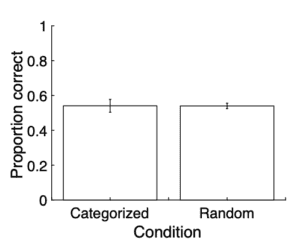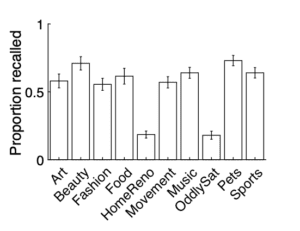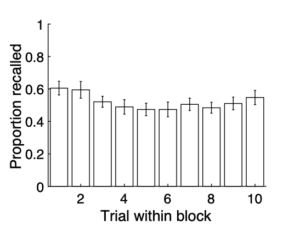Our Team

Kunhua Cheng
Undergraduate Researcher
Kunhua is a third-year Psychology major at Cal Poly, interested in pursuing research in cognitive psychology and user experience in the future. For the study, Kunhua found relevant stimuli, ran student participants for the study, and scored participants’ recall descriptions.

Taylor Eng
Undergraduate Researcher
Taylor is a fourth-year Child Development major minoring in Psychology at Cal Poly. Taylor is interested in pursuing research and teaching in the future. For this project, Taylor helped find relevant stimuli and scored participants’ recall descriptions.

Hector Reyes
Undergraduate Researcher
Hector is a third-year Psychology student at Cal Poly who is a member of the WPA Student Council Member and PSYSAC. In the future, Hector hopes to pursue a PhD in Clinical Psychology. For this project, Hector scored participants’ recall descriptions.

James W. Antony, Ph.D.
Research Advisor
Dr. Antony is an instructor in the Department of Psychology and Child Development at Cal Poly and a project scientist at the University of California, Davis. He uses various methods (EEG, fMRI, computational modeling) to understand factors that impact memory persistence.

Kelly A. Bennion, Ph.D.
Research Advisor
Dr. Bennion is an Associate Professor in the Department of Psychology and Child Development and a BEACoN Faculty Fellow with the Office of University Diversity & Inclusion. Her research interests focus on how sleep, emotion, and other real-life variables impact memory consolidation.
Acknowledgements
Special thanks to Dr. Dawn Neill for organizing the inaugural CLA SURP, as well as our funding sources: the College of Liberal Arts, CLA Circle of Giving, Office of the Provost & Executive Vice President, and Office of Student Research.
TikTok: Ephemeral or Memorable?
Introduction
A prior study about TV news highlights the “And Now… This” effect, showing poor recall when short, disconnected information is presented. This parallels the way information is presented on social media platforms (e.g., TikTok), where we view information, such as videos, back to back in quick succession without much correlation.
Research Question
Is recall as poor when viewing disconnected information on a social media platform such as TikTok?
Sample Heading
Stimuli Selection
- Found 10 videos from 10 categories (Art, Beauty, Fashion, Food, Home Renovation, Movement, Music, Oddly Satisfying, Pets, Sports)
- Inclusionary criteria: videos approximately 15 seconds each; each video could be uniquely named and described to ensure that the recall tests would be feasible to score
- Exclusionary criteria: profanity, created by celebrities, overly popular/viral
- Screencast-O-Matic was used to record and cut the videos so that each looped twice in a row and all videos were converted to mp4.
Procedure
- Participants enrolled in the study as part of an experiential learning requirement for PSY 340 (Biopsychology) during Summer Sessions 1 and 2.
- The experiment was conducted over Zoom synchronously using Qualtrics software.
- Participants watched a total of 100 videos (10 blocks of 10 videos).
- Conditions:
- Categorized: All 10 videos within a block were from the same category.
- Randomized: Each of the 10 videos within a block was from a different category, presented in a random order.
Data Scoring
- Two raters scored participants’ recall memory of each video independently, blinded to condition, based on the following:
- Whether the participant successfully identified the video based on their description
- Level of detail (scale of 0-4; 0 being unable to identify the video and 4 being impressively thorough)
- Presence of false memories (scale of 0-2; 0 being no false memories and 2 being a major false memory)
Design

Results
Overall Memory by Condition

- Unexpectedly, participants were equally likely to remember videos in the Categorized vs. Randomized conditions, despite ample evidence that organization benefits memory.
- This suggests that perhaps young adults are so well practiced at viewing random videos on social media that performance is enhanced. It is also possible that viewing the videos in blocks led participants to habituate and not attend as well to each video within the same category.
Memory by Category

- Memory varied across categories, likely aligning with participants’ interests and personal relevance, as these factors have been shown to enhance memory.
- Particularly, participants had excellent memory for videos about pets and beauty.
- Future analyses may investigate whether gender differentially impacted memory across categories.
Memory within Block

- Within each block, there was a primacy effect (enhanced memory for the beginning of an experience) and recency effect (enhanced memory for the end of an experience), findings that are well-established in the literature.
Take-Home Messages
- No effect of grouping videos by category (so far; scored 15 videos in the categorized condition and 5 participants in the randomized condition, but have run over 40)
- Some categories were clearly more memorable.
- Pets and Beauty videos were remembered well.
- Home Renovation and Oddly Satisfying videos were remembered poorly.
- Classic primary and recency effects found in word lists memory studies also apply to videos.
- In the future, we will analyze more data, ask how subjects organize their recall, and uncover properties of the videos that make them memorable or forgettable.

This project was sponsored by the College of Liberal Arts, CLA Circle of Giving, Office of the Provost & Executive Vice President, and Office of Student Research.
